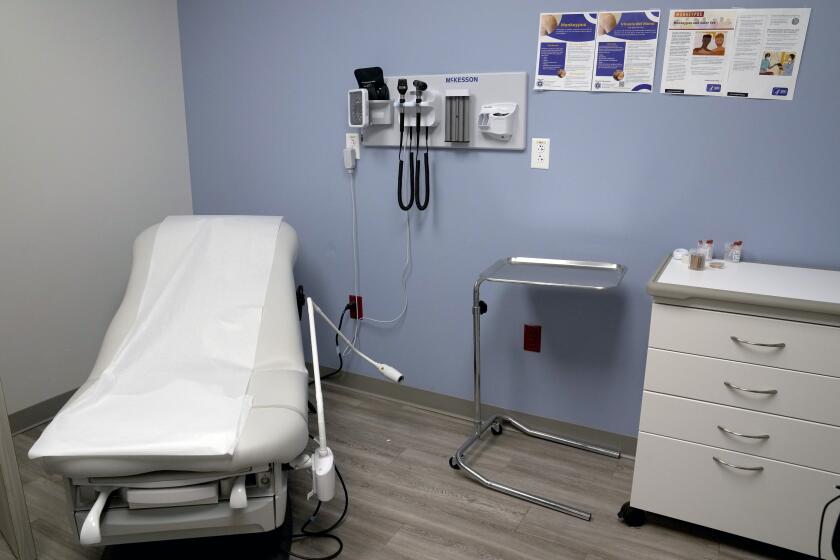California limits HMO wait times
Seeking to reduce the long waits many people endure to see a doctor, California regulators are implementing new rules that specify how quickly patients in health maintenance organizations must be seen.
The regulations by the California Department of Managed Health Care, in the works for much of the last decade, will require that patients be treated by HMO doctors within 10 business days of requesting an appointment, and by specialists within 15.
Patients seeking urgent care that does not require prior authorization must be seen within 48 hours.
Telephone calls to doctors’ offices will have to be returned within 30 minutes, and physicians or other health professionals will have to be available 24 hours a day.
California says it is the first state to set time standards for HMOs, which serve nearly 21 million of its residents.
The managed healthcare department acted in response to a 2002 law that mandated more timely access to medical care. The law left it to state officials to work out the details, which became subject to protracted negotiations with HMOs, doctors, hospitals, consumer groups and other healthcare activists.
In all, it took seven years to finally reach agreement amid intensive talks, bureaucratic hurdles and a lengthy rule-writing process, participants said.
“It’s been a long time coming,” said Anthony Wright, executive director of Health Access California, a consumer group that pushed for the 2002 law. “These regulations . . . will not only get people access to care when they need it, but will reduce unnecessary use of the emergency room.”
The rules will be unveiled Wednesday at Cedars-Sinai Medical Center in Los Angeles and phased in over the next year.
The legislation came in response to complaints from HMO members of long delays in getting treatment, and it does not generally affect people served by other healthcare plans.
HMOs cautiously support the new rules, even as some predict that they may drive up costs.
Kaiser Permanente, the nation’s largest nonprofit HMO, said it would spend the next two months analyzing potential gaps in the delivery of medical services to fulfill the requirements.
“We really feel the work we’ve done over the last several years has put us in a place to be in compliance,” said Patti Harvey, Kaiser’s vice president for quality in Southern California. She declined to specify the company’s current wait times or to estimate potential costs.
The trade group representing California HMOs called the new rules a “reasonable compromise” but predicted higher costs as a result.
“A regulation like this will certainly add another challenge,” said Charles Bacchi, executive vice president of the California Assn. of Health Plans.
California consumers have long complained about delays in getting care from HMOs and other health insurers.
One 2009 study that has been cited by state officials found that consumers in California’s two largest cities face extended delays when trying to get medical services.
People in San Diego wait an average of 24 days for a routine physical with a family practitioner, according to the survey by Merritt Hawkins & Associates, a national physician recruiting firm.
In Los Angeles, patients wait 59 days on average, the study found. Researchers said Los Angeles’ high cost of living, its vast poor population and low reimbursement rates from Medi-Cal drive family doctors away from the city or into specialties that offer higher pay.
“In addition to mandating wait times, there needs to be some strategy for increasing the numbers of doctors being trained in California,” said Phil Miller, a spokesman for the recruiting firm.
After the rules are unveiled Wednesday, HMOs will be given nine months to submit plans that meet the new guidelines, allowing for the fact that many HMOs will need to revise their contract agreements with physician networks and other groups.
HMOs will be given until January 2011 to comply; after that, the managed healthcare department will have the authority to penalize HMOs that fail to ensure timely care. People will be able to complain to the department about delays.
The regulations “set reasonable expectations about when care should be provided,” said Cindy Ehnes, director of the department.
But some doctors say the plan could compromise medical care by forcing them to hustle more patients through their offices, a problem that is already expected to grow as millions of uninsured Californians sign up for insurance under the national healthcare overhaul in Washington.
Reducing wait times will work only if health plans hire more physicians, doctors contend, a challenge in a state that faces significant shortages of doctors -- particularly those in specialties such as pediatrics, geriatrics and vascular surgery.
“The pressure should be on health plans to have adequate networks of doctors,” said Dr. Richard Frankenstein, a Riverside internist and former president of the California Medical Assn. “That’s up to health plans because that’s what they promise their patients.”
HMOs contend that they face pressures of their own to find enough doctors to serve their growing ranks of members. A dearth of physicians, especially in rural areas, drives up wait times, they say.
Regulators, however, say flexibility is built into the new rules. For example, doctors can use their professional judgment to extend the waiting time if they determine that a delay will “not have a detrimental impact on the health of the enrollee.”
The rules also apply to HMO plans that provide dental, vision, chiropractic, acupuncture and mental health care -- but in some cases with different wait times.
More to Read
Start your day right
Sign up for Essential California for news, features and recommendations from the L.A. Times and beyond in your inbox six days a week.
You may occasionally receive promotional content from the Los Angeles Times.





